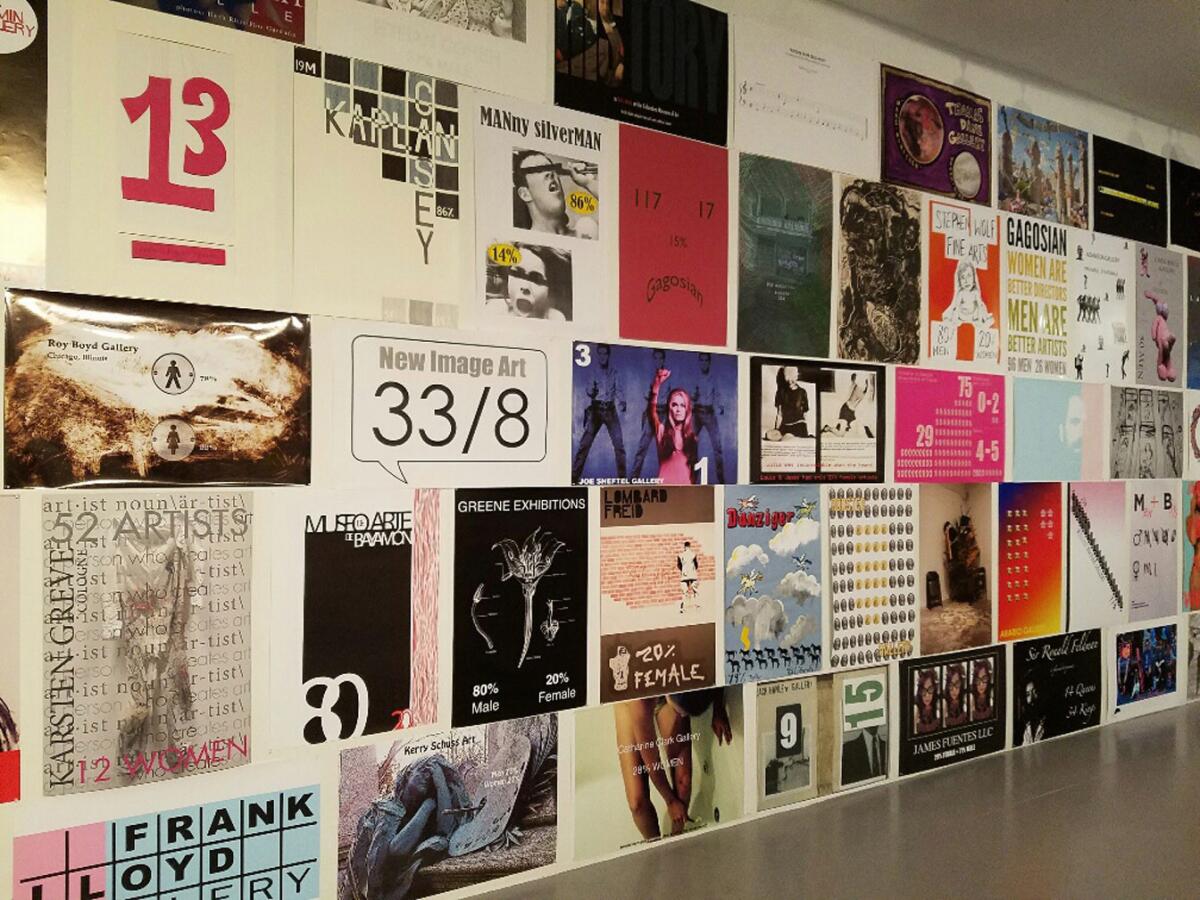Review: How much do art galleries favor men over women? Gallery Tally poster project puts answer on the wall

A view of âGallery Tallyâ at Los Angeles Contemporary Exhibitions.
Within the art world, if not among the general public, it is pretty common knowledge that galleries represent far more men than women -- and always have. Calculating just how many is the aim of â(En)Gendered (In)Equity: The Gallery Tally Poster Project,â in which Micol Hebron invited any artist anywhere to submit a poster that charts the male/female representation in galleries worldwide.
A few hundred of the posters were shown at ForYourArt in 2014. Now, more than 400 are at Los Angeles Contemporary Exhibitions, where they cover the main roomâs walls.
The showâs primary disappointment is in how visually uninteresting the majority of these posters are.
A few are just corny, such as one in the style of a traffic ticket issued to a violator gallery (17 men, 1 woman). A handful zing, like the sly poster that puts black bars across the eyes of male and female headshots, indicating the old-fashioned pornography of the dominant male gaze that fuels the problem. (Participating artists are listed at the entry but not assigned to individual posters.) I wish there were more like that.
The showâs strength is in its data.
In an interview two years ago, Hebron said the average gallery ratio of men to women is 70-30. Nothing at LACE suggests any change -- even though a small number of galleries rate 50-50 or better.
The question is why? What drives the stubborn sexist disparity?
The short answer is: the market. Galleries are businesses, not social service agencies, and the market plainly feels more secure investing in the cultural production of men.
The reasons for that are complex, reverberating from the resale rooms and auction houses to established museums, where historical collections are inevitably dominated by menâs art. Yet, the market itself is merely a reflection of larger social forces. In the U.S., at least, and probably elsewhere, I think another major factor is at work.
The over-representation of male artists is powerful psychic compensation for the arts being socially and culturally gendered as feminine. Theater, music, dance, visual art -- those are activities largely assigned to girls, not boys, as they grow up in America. Later, the adult human urge to regard them seriously and with intensity butts up against fearful, deeply ingrained gender stereotypes.
Over-valuing art by men at the expense of women puts a beard on the issue. Hebronâs âGallery Tallyâ is a quick shave.
LACE, 6522 Hollywood Blvd., Hollywood, (323) 957-1777, through April 17. Closed Sunday and Monday, www.welcometolace.org
Twitter: @KnightLAT
More to Read
The biggest entertainment stories
Get our big stories about Hollywood, film, television, music, arts, culture and more right in your inbox as soon as they publish.
You may occasionally receive promotional content from the Los Angeles Times.











